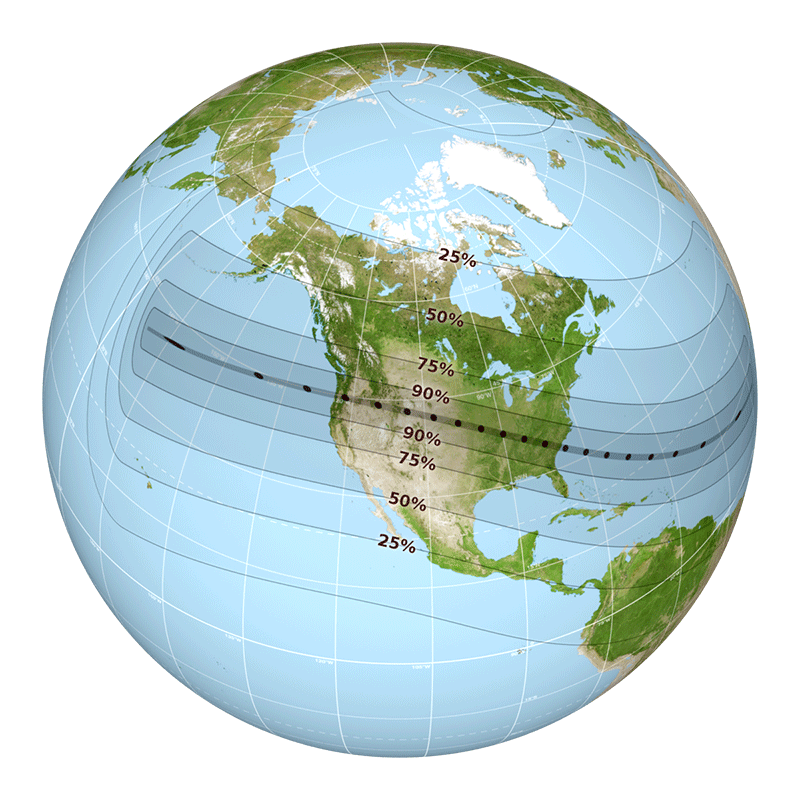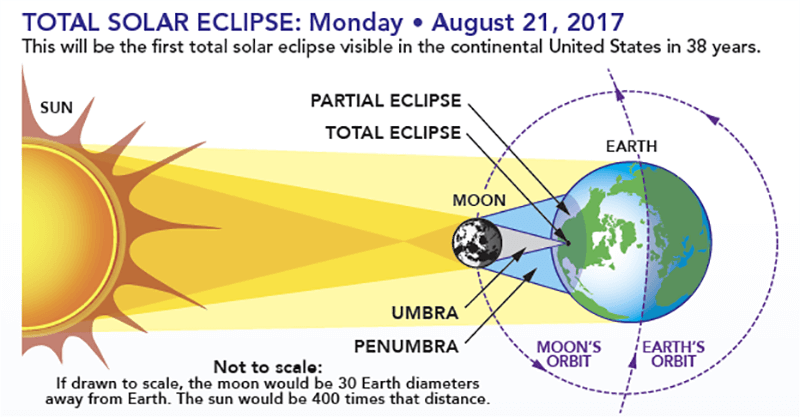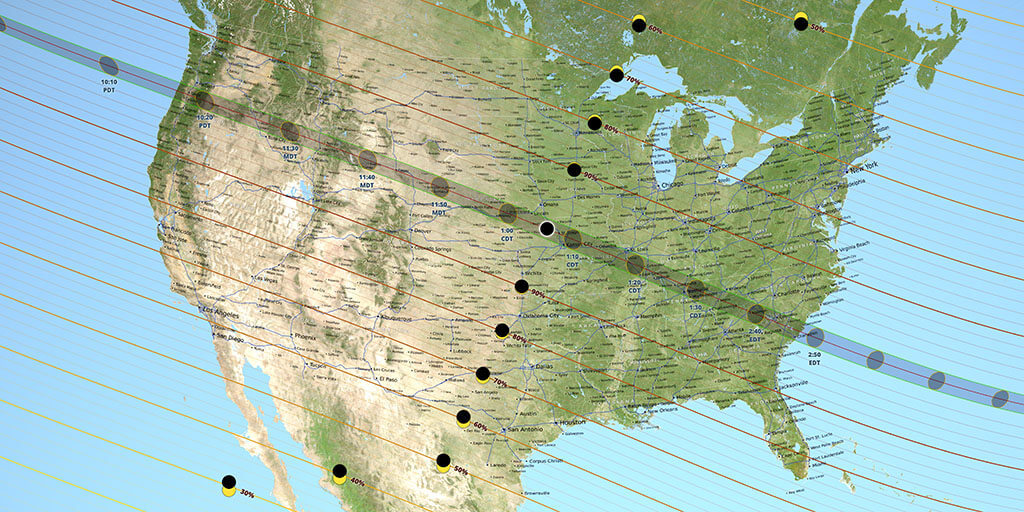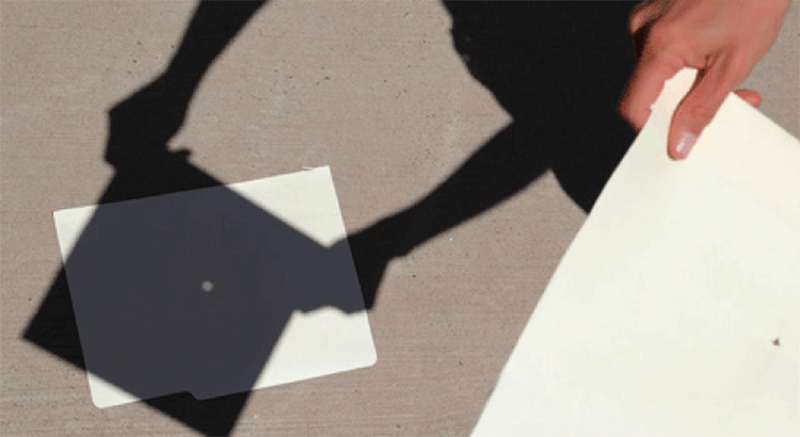Eclipse: Who? What? Where? When? and How?
Total Solar Eclipse
On Monday, August 21, 2017, all of North America will be treated to an eclipse of the sun. Anyone within the path of totality can see one of nature’s most awe-inspiring sights - a total solar eclipse. This path, where the moon will completely cover the sun and the sun's tenuous atmosphere - the corona - can be seen, will stretch from Lincoln Beach, Oregon to Charleston, South Carolina. Observers outside this path will still see a partial solar eclipse where the moon covers part of the sun's disk.
Image Credit: Rick Fienberg, TravelQuest International and Wilderness Travel
Figure 1- In this series of still from 2013, the eclipse sequence runs from right to left. The center image shows totality; on either side are the 2nd contact (right) and 3rd contact (left diamond rings that mark the beginning and end of totality respectively).
Who Can See It?
Lots of people! Everyone in the contiguous United States, in fact, everyone in North America plus parts of South America, Africa, and Europe will see at least a partial solar eclipse, while the thin path of totality will pass through portions of 14 states.
Image Credit: NASA’s Scientific Visualization Studio
Figure 2- This map shows the globe view of the path of totality for the August 21, 2017 total solar eclipse. You can find more information at: https://svs.gsfc.nasa.gov/4518
What is It?
This celestial event is a solar eclipse in which the moon passes between the sun and Earth and blocks all or part of the sun for up to about three hours, from beginning to end, as viewed from a given location. For this eclipse, the longest period when the moon completely blocks the sun from any given location along the path will be about two minutes and 40 seconds. The last time the contiguous U.S. saw a total eclipse was in 1979.
Figure 3 – Diagram showing the Earth-sun-moon geometry of a total solar eclipse. Not to scale: If drawn to scale, the Moon would be 30 Earth diameters away. The sun would be 400 times that distance.
Where Can You See It?
You can see a partial eclipse, where the moon covers only a part of the sun, anywhere in North America (see “Who can see it?”). To see a total eclipse, where the moon fully covers the sun for a short few minutes, you must be in the path of totality. The path of totality is a relatively thin ribbon, around 70 miles wide, that will cross the U.S. from West to East. The first point of contact will be at Lincoln Beach, Oregon at 9:05 a.m. PDT. Totality begins there at 10:16 a.m. PDT. Over the next hour and a half, it will cross through Oregon, Idaho, Wyoming, Montana, Nebraska, Iowa, Kansas, Missouri, Illinois, Kentucky, Tennessee, Georgia, and North and South Carolina. The total eclipse will end near Charleston, South Carolina at 2:48 p.m. EDT. From there the lunar shadow leaves the United States at 4:09 EDT. Its longest duration will be near Carbondale, Illinois, where the sun will be completely covered for two minutes and 40 seconds.
Figure 4 - A map of the United States showing the path of totality for the August 21, 2017 total solar eclipse.
When Can You See It?
Times for partial and total phases of the eclipse vary depending on your location. This interactive eclipse map will show you times for the partial and total eclipse anywhere in the world.
Table 1 – Example of eclipse times for cities in the path of totality.
How Can You See It?
You never want to look directly at the sun without appropriate protection except during totality. That could severely hurt your eyes. However, there are many ways to safely view an eclipse of the sun including direct viewing – which requires some type of filtering device and indirect viewing where you project an image of the sun onto a screen. Both methods should produce clear images of the partial phase of an eclipse. Click here for eclipse viewing techniques and safety.
Figure 5 - Check with local science museums, schools and astronomy clubs for eclipse glasses—or purchase an ISO 12312-2 compliant pair of these special shades!
Figure 6 - This list describes when to wear your glasses and when you can safely look at the eclipse, only during totality!
Sun watchers gather around telescopes fitted with white light solar filters.
Image Credit: NASA Kepler Mission
Using a projection method to view the sun.
Image Credit: NASA Jet Propulsion Laboratory.















